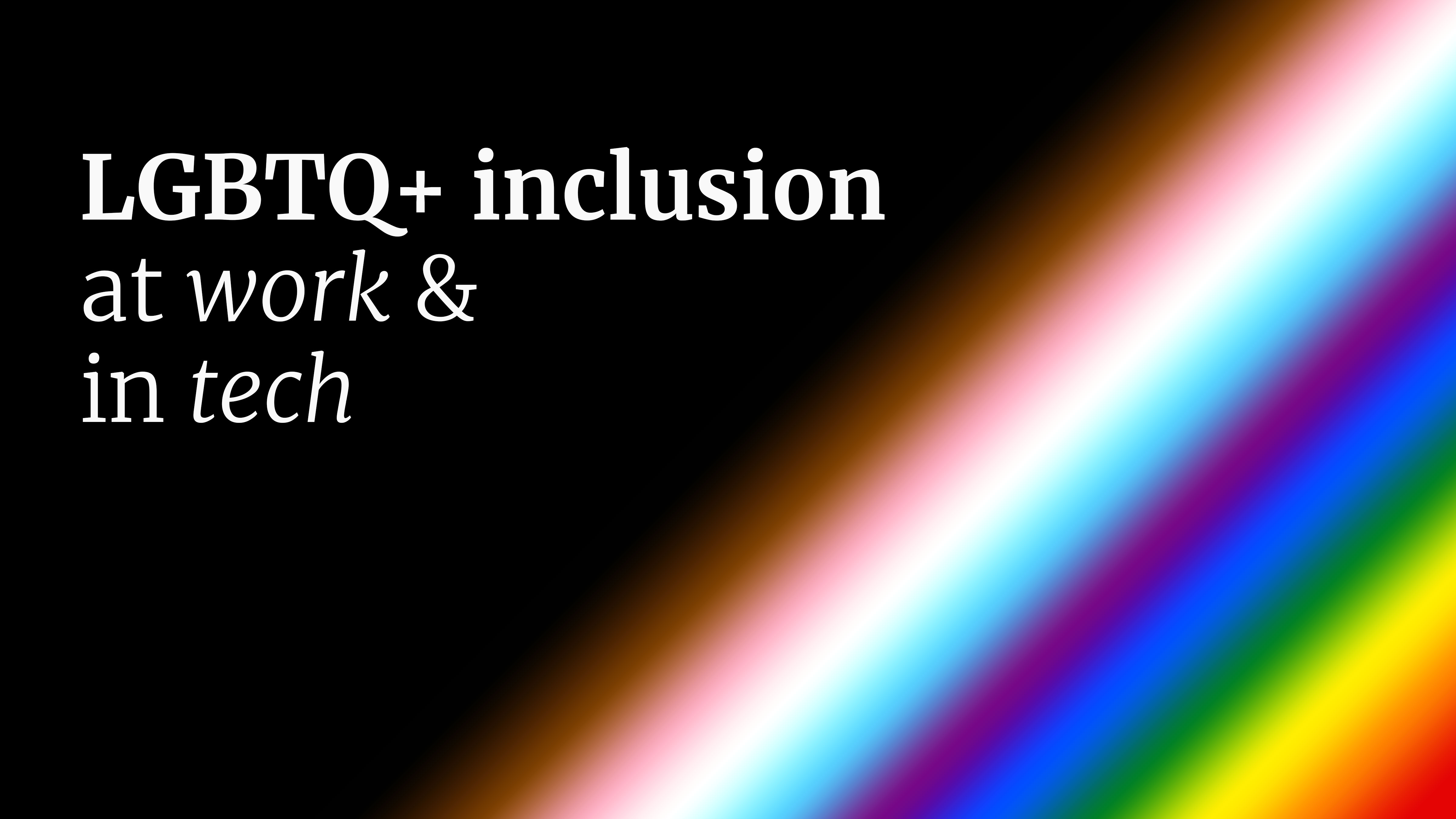
LGBTQ+ inclusion at work and in tech
The views expressed herein are those of the author and do not necessarily reflect those of GSA, its leadership, or employees.
Post filed in: Civil Rights
How can we be responsible for designing inclusive products and services, with LGBTQ+ people and experiences at the center?
Pride Month is an annual celebration of the Lesbian, Gay, Bisexual, Transgender, Queer, Questioning, Intersex, Asexual, Pansexual, and Two-Spirit (LGBTQ+) community’s history of fighting for inclusion and dignity in America. To honor Pride Month, federal employees should respect and include the experiences of LGBTQ+ people in their work year-round. I’m proud to have the opportunity and responsibility to do so as a Presidential Innovation Fellow (PIF), where we develop innovative services accessible to all Americans. From my experiences being an openly gay PIF, I have found five ways that people can better ally themselves with the LGBTQ+ community at work (and beyond):
- Take people at their word: Believe and respond to how people choose to identify and express themselves without malice or skepticism.
- Respect boundaries: Queer and transgender people do not need to reveal personal experiences, such as their romantic lives or medical histories, to validate their existence.
- Move forward to ensure that LGBTQ+ individuals feel welcome: Challenge cruel and insensitive remarks, avoid gendered language, and consider proactively sharing your pronouns so that others can express themselves without trepidation.
- Move back to consider outside perspectives: The LGBTQ+ community — extremely diverse in its own right — includes many other people at the intersections of race, ability, class, and other lived experiences that shape their unique perspectives.
- Learn, unlearn, and re-learn: Ask questions to better understand someone’s needs and perspectives, but take initiative to educate yourself as well.
Besides including LGBTQ+ people at work, we at GSA and TTS also have a responsibility to design inclusive technology. For queer and/or transgender Americans like myself, technology — including areas like customer experience, cybersecurity, and machine learning — can either improve or endanger our lives. To design LGBTQ+ inclusive tools, technologists can start by asking themselves key questions, such as:
- “What do I want to know and why do I need it?”
Inclusive forms are critical for collecting comprehensive data about LGBTQ+ people. Often restricting gender to binary male/female options, forms misrepresent the realities of complex gender expression and should give more expansive options for indicating gender — including pronouns, titles, and honorifics — using drop down, check boxes, and multiple fixed responses (one inclusive form example is the White House’s “Contact Us” form). Similarly, efforts to track sexual orientation are becoming more prevalent. However, forms that ask people to identify as “lesbian, gay, bisexual, or transgender” mistake transgender as a sexual orientation rather than a gender identity. Conflating gender with sexuality erases the specificity and diversity within each identity, so it is critical to design by and with the communities we serve.
- “Whose data am I collecting and how do I protect it?”
Inclusive practices often assume that LGBTQ+ people wish to be publicly identified when, in actuality, many do not since they face stigma or prejudices. When collecting data about people, technologists must think about what information they are collecting. Medical and surgical records, sexual histories, addresses, and family contacts can be weaponized against LGBTQ+ folks and must be guarded carefully. Any product or tool collecting data should be secure and often request user consent before disclosing or following up on information. Personal information stored on government systems may be subject to additional legal restrictions on collection, use and dissemination.
- “What am I trying to build and what will I prove?”
Artificial intelligence systems should be designed and deployed thoughtfully on LGBTQ+ individuals. For example, a music company patented an algorithm that detects a person’s music tastes based on the perceived gender of their voice, while a “girls only” social networking app requires users to upload a picture of themselves in order to join. Effectively, these projects reinforce expectations of rigid, binary gender expression and marginalize people unable to conform to these norms.
My PIF colleague Maria Patterson (she/her) shares, “We need to move away from ‘Move fast and break things’ to ‘Include before you move.’” Pride Month is an excellent reminder that we need to bake representation and equity into all products and services we design.

 U.S. General Services Administration
U.S. General Services Administration
